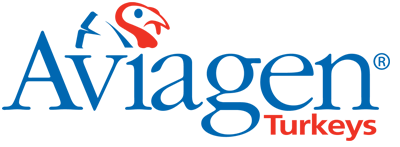Aviagen Turkeys Present Valued Industry Knowledge at Fourth Technical Talk
Many valued customers were welcomed to our fourth Aviagen® Turkeys (ATL) Technical Talk, which was held on Tuesday 21st September 2021. Technical Talks are a great way for us to stay in touch with our customers throughout these unprecedented times and allows us to continue providing top quality service during the COVID-19 pandemic.
Technical Talk topics presented were 'An update on in ovo sex determination' by Jörg Hurlin Managing Director of Agri Advanced Technologies GmbH, 'Managing turkey breeders for optimal performance' by Peter Hunt Management Specialist at ATL and 'Using egg breakouts to improve hatches’ by Dr. Michelle Behl Director of poult quality at Select Genetics.
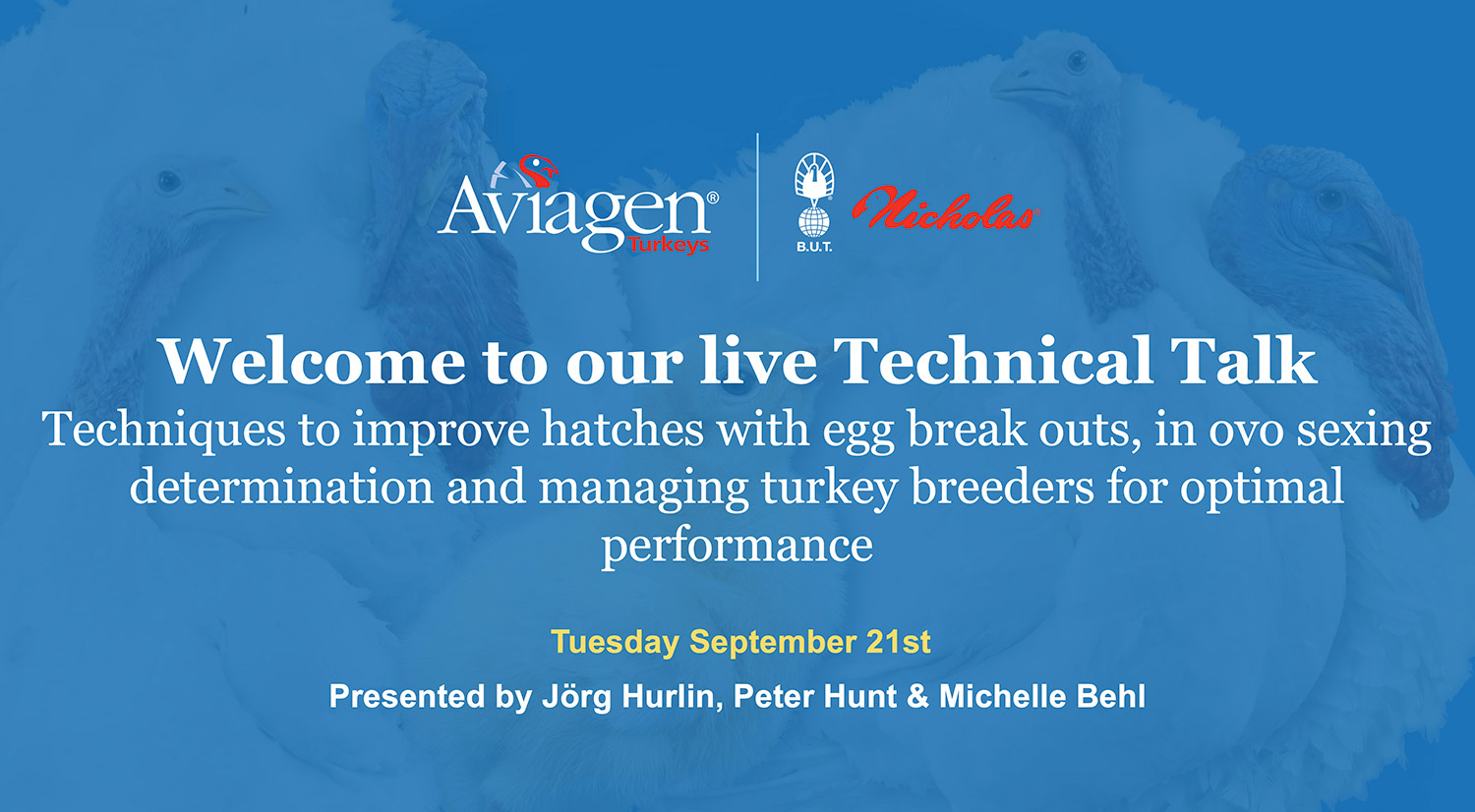
Jörg began his presentation with introducing Agri Advanced Technologies which is part of the EW Group. The EW Group is involved in many business activities such as breeding and vaccines however Jörg focused on the technical solutions for specialised technologies in the hatchery and on farm. The current global concerns for killing males has raised particular pressure in the egg production sector, especially with no more culling of day old chicks coming into force for Germany in 2022, and France in 2023. Jörg explains how the dual purpose bird is better such as a turkey with the male used for meat and the female used for egg production. The big hope is on the gender sorting in the embryonated egg to help with the culling of day old birds.
Jörg then showed an image of the current sex determination trials currently being carried out around the globe, explaining some of the market ready alternatives for culling. One of these is Raman Spectroscopy, which then leads into invasive methods such as sampling allantoic fluid and Hyperspectral Imaging. The final part of this presentation then went into the advantages and disadvantages of in ovo sexing for turkeys and the cost of this method compared to vent sexing.
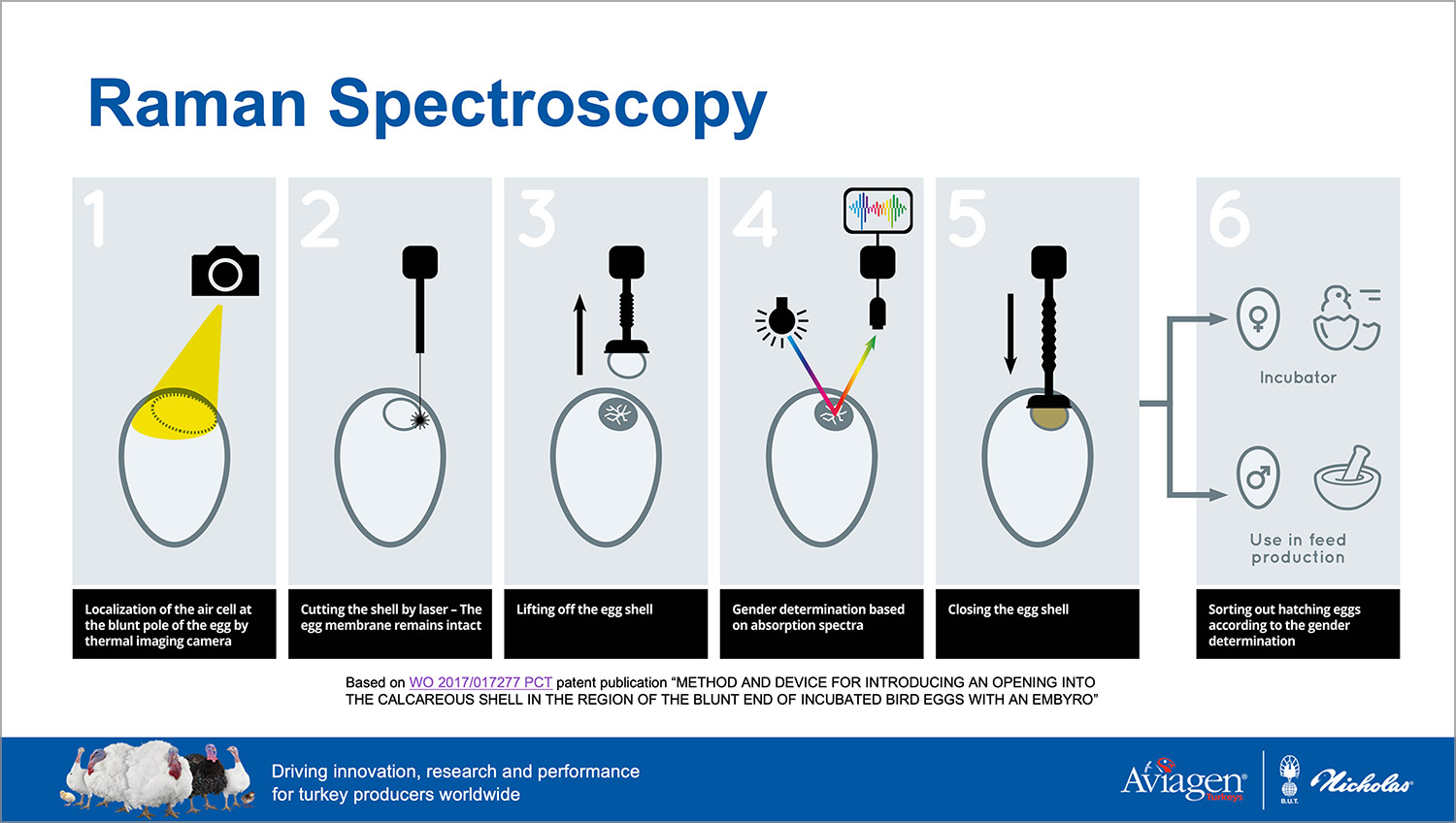
Peter Hunt opened his presentation by describing the main factors to achieve the best genetic potential from Aviagen Turkey Breeds which include an appropriate environment, good feed and water quality and effective biosecurity and disease control programme. Peter explained the best type of environment and lighting from day old during brooding, leading into the growing phase, conditioning phase and the laying phase from 29+ weeks.
Peter then explained the advantages and disadvantages to manual and automatic nest boxes. Peter added “In our experience similar egg numbers can be expected when both systems are managed to a high standard”. Two videos were shown that showed some changes that had been made to solve the problem of hens sitting on the ramps of automatic nests.
Peter then moved onto lighting for breeders and that the red part of the spectrum of long wavelengths (500 to 700mm) has been shown to be the most important for photo-stimulation. This lead to explaining about chromaticity, sunlight at noon and the differences of warm and cold compact fluorescent bulbs. Peter finished on Artificial Insemination explaining trials that were conducted by Aviagen Turkeys during cycles over the laying period.
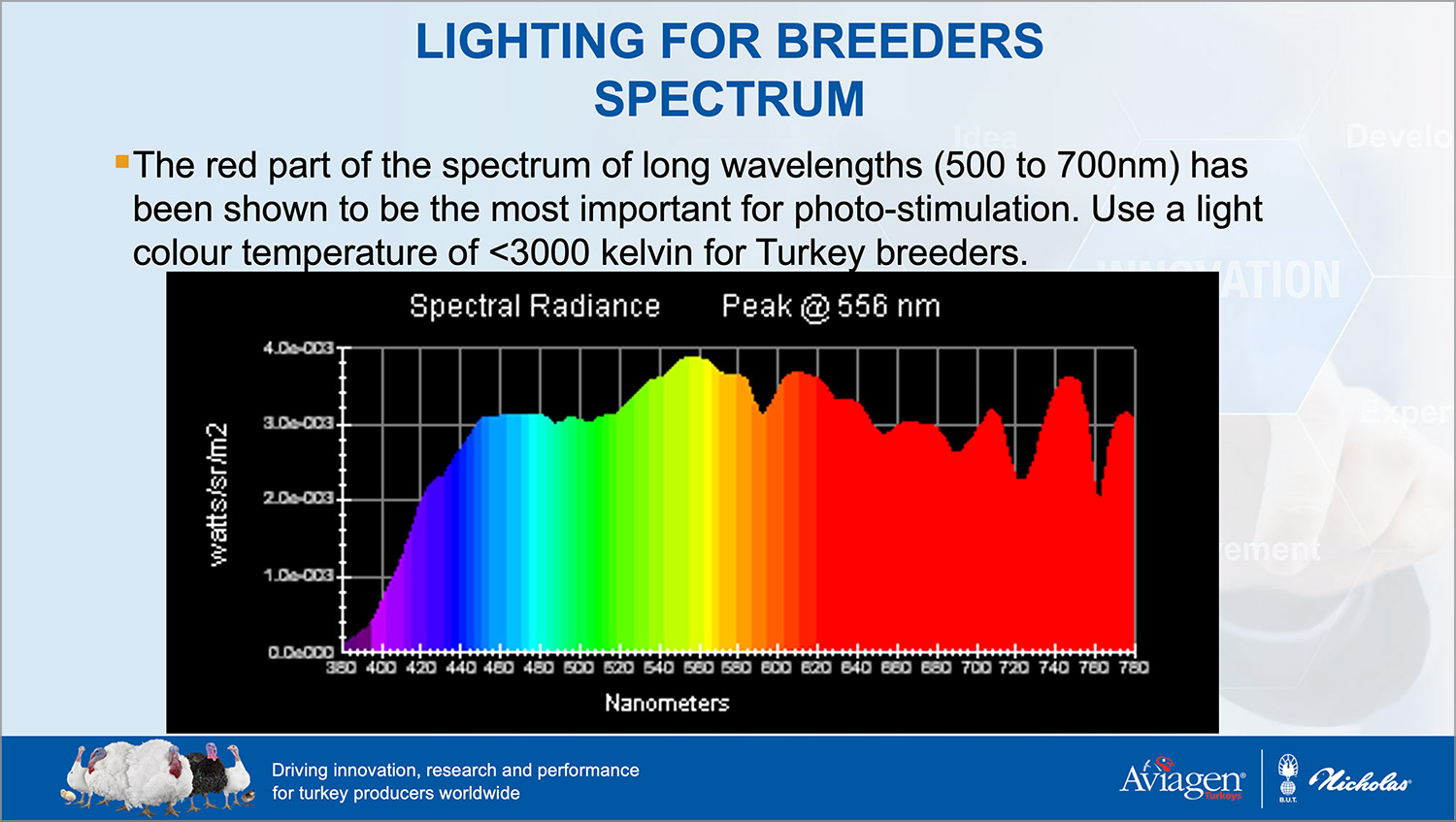
To finish, Dr. Michelle Behl gave a presentation on using egg breakouts to improve hatches. “It is an extremely powerful diagnostic tool. It captures and documents the events from the time in which the egg is laid up until the poult is hatched. Breakouts can give an insight to breeder nutrition whether it is the presence of toxins in the feed or vitamin or mineral deficiencies. Often you will pick up these issues in the breakouts well before you will notice these issues in the breeder hen herself”. Describing how to plan and carry out egg breakouts was discussed further before Michelle went on to show a few breakout videos which included opening from the top, early embryonic mortality, late embryonic mortality, and live-in shell embryos.
Further detail then went into the tracking and analysis of breakouts with examples of how to do this and the type of forms to use to log the information found. This included the embryo development and the embryonic lesions. Michelle added “It is not uncommon to see an increase in the amount of middle deads in a multi-stage machine. It is the nature of the equipment. Therefore, it is critical that you find out your normal and use that as a measuring stick”.
Details can be found in the lesions as they can help indicate many issues. One of the examples discussed was if a loss of too much moisture happens during incubation, it could result in a lot of stuck in shell embryos and skin necrosis. Lesions take time to develop so they can be used to help determine the duration and extent the embryos have been compromised.
Michelle ended the presentation explaining that more information could be found in the ‘Management Guidelines for Turkey Hatcheries’ on the website as well as other hatchery documents and posters.
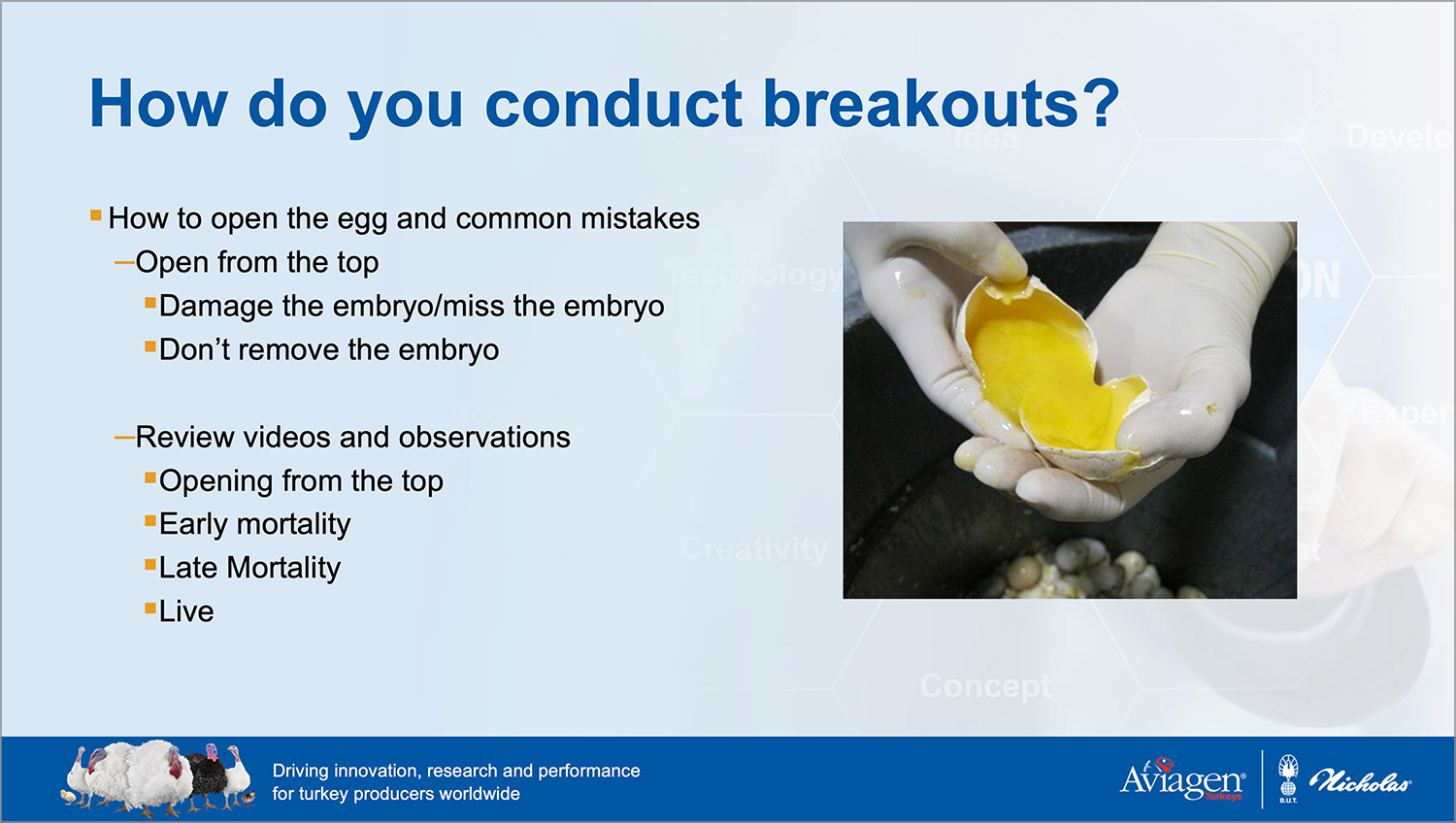
From everyone here at ATL, we would like to say a huge thank you to all of our customers who took the time to attend September’s Technical Talk.
The next Technical Talk will take place on Tuesday 9th November, please get in touch to find out more information.
